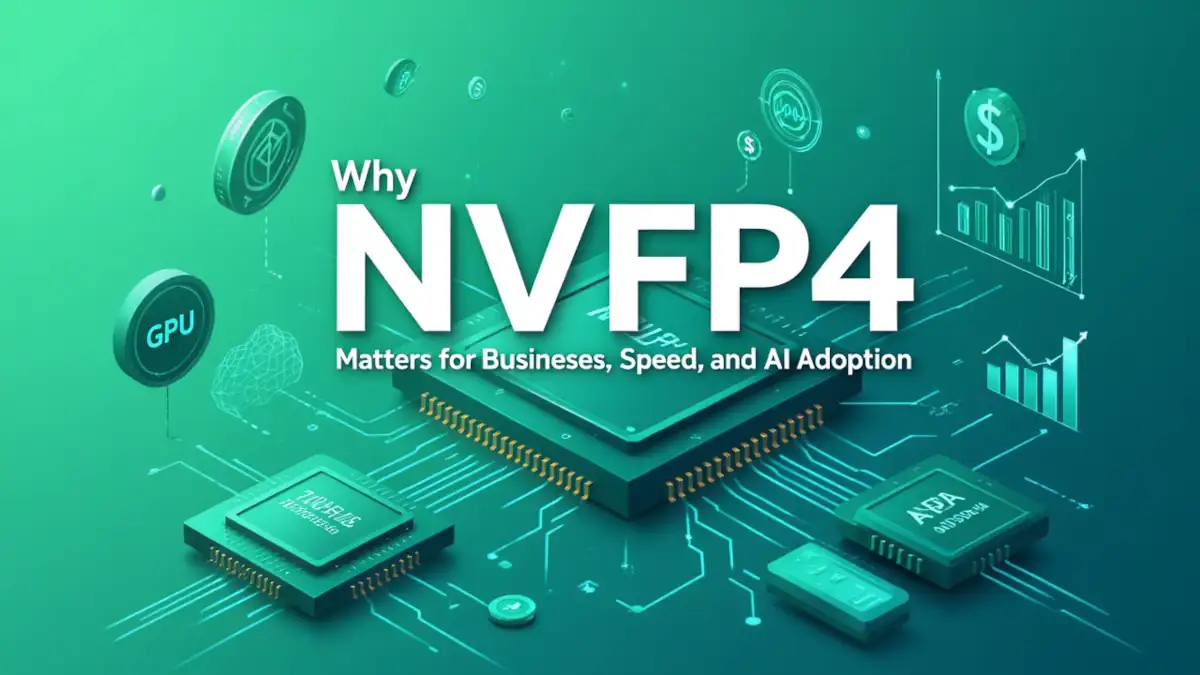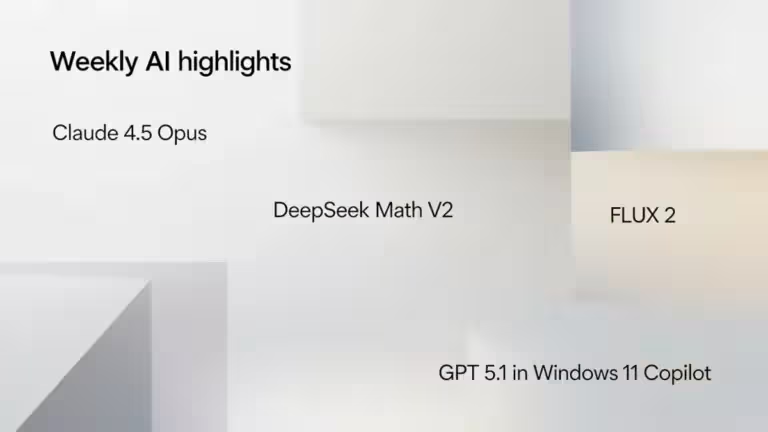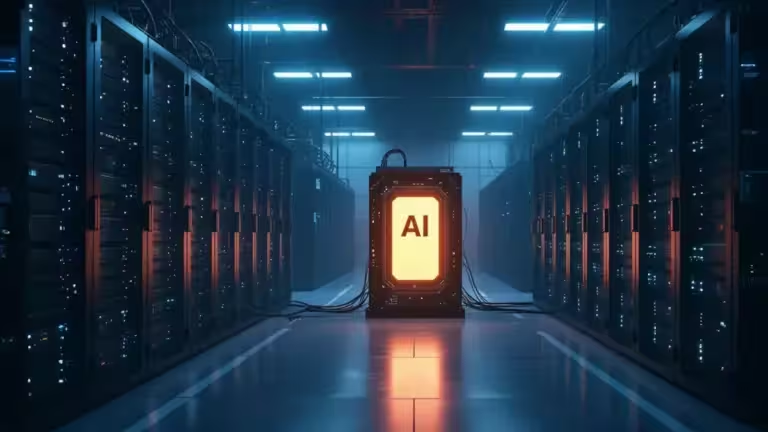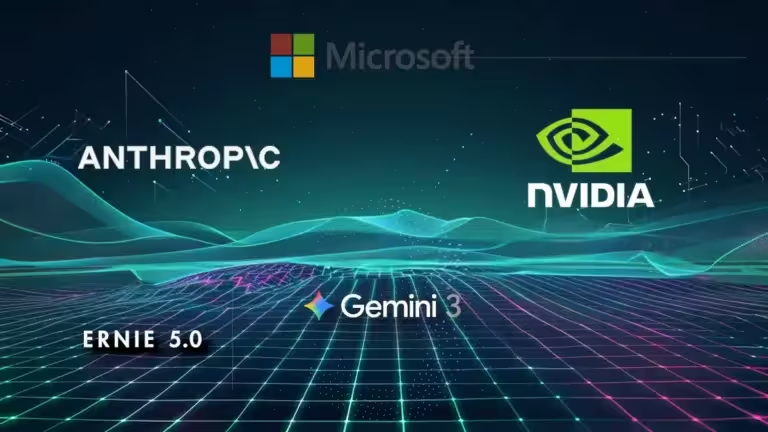Why NVFP4 Matters for Businesses: Costs, Speed and AI Adoption

AI is rapidly becoming the engine of the digital economy. But behind the impressive capabilities of large language models (LLMs) lies a very concrete issue: the energy and financial bill. Training and running these models requires massive infrastructures, and cloud costs are skyrocketing.
This is where NVFP4, a 4-bit format developed by NVIDIA, comes into play. At first glance, it looks like a minor technical detail. In reality, it can transform how businesses invest in artificial intelligence by cutting costs, accelerating projects, and optimizing resources. For more in-depth details about the NVFP4 format, you can check our dedicated page.
AI training costs: the real battleground
Every IT manager or decision-maker working with AI knows that the “GPU” line on the invoice is the most painful. Modern models demand hundreds of thousands of GPU hours and consume several megawatts of energy.
Thanks to its ultra-compact representation, the NVFP4 format cuts memory needs in half compared to FP8 and enables training up to 6× faster than BF16 on Blackwell GPUs (Tom’s Hardware). This translates directly into savings:
- fewer GPUs required for the same workload
- less billed time from cloud providers
- lower energy consumption, which means reduced electricity bills
Performance gains in benchmarks
Academic studies published on arXiv show significant real-world improvements. On a 12B parameter model trained on 10 trillion tokens:
- Training speed: 3 to 4× faster than BF16, about 2× faster than FP8
- Memory consumption: ~50% less than FP8, ~75% less than BF16
- Maintained accuracy: only 1 to 1.5% difference on validation loss
In practice, this means a training job that would take several weeks in BF16 could be completed in a few days with NVFP4, representing massive savings in both cloud and energy costs.
Important note: These gains depend strongly on the hardware used (Blackwell GPUs required), dataset size, model architecture, and specific optimizations. Production results may vary depending on your configuration.
Speed and productivity: time is money
In a competitive environment, shortening the AI development cycle can be the difference between an innovative company and one lagging behind.
Tests confirm that NVFP4 achieves almost the same accuracy as FP8 with just 1 to 1.5% difference on validation loss, even when training on 10 trillion tokens. In other words:
- models converge just as well
- but in far less time
This enables R&D teams to test more hypotheses, iterate faster, and reduce time-to-market.
Adoption in cloud and NVIDIA solutions
NVIDIA did not just publish a format, it integrated it across its ecosystem.
- Transformer Engine and TensorRT-LLM already support NVFP4 (GitHub NVIDIA).
- NVIDIA’s in-house models like Nemotron use NVFP4 as the recommended 4-bit training format (NVIDIA blog).
- DeepSeek-R1 has shown that inference in NVFP4 can deliver higher throughput while lowering consumption (Introl Tech Blog).
Key point for enterprises: vLLM, a widely used inference solution in production, already supports NVFP4. This makes adoption much easier in existing infrastructures and significantly lowers the risk of technological isolation.
Also read : Install vLLM with Docker Compose on Linux (compatible with Windows WSL2)
Energy impact: is green AI finally here?
One of the strongest arguments in favor of NVFP4 is its energy efficiency. According to Introl Tech Blog, NVFP4 can reach up to 50× higher inference efficiency than traditional formats under optimal conditions.
Important: This peak gain applies mainly to very specific inference scenarios:
- Large-batch inference at scale on Blackwell GPUs
- Models optimized for ultra-low precision
- Ideal hardware and software setups
Real-world gains depend on multiple factors such as model architecture, batch size, and query type. In production, efficiency improvements usually fall between 2× and 10×, which is still very significant.
For businesses, this means not only lower costs but also a smaller carbon footprint. With new environmental regulations, reducing AI’s energy consumption is becoming both a competitive advantage and a necessity.
Who should care about NVFP4?
NVFP4 is relevant to a wide range of enterprises deploying AI models at scale:
Large enterprises
- Internal datacenters: reduced operational costs and energy footprint
- Large-scale training: optimized development cycles
- Cloud services: better margins for AI offerings
SMBs with local infrastructure
- On-prem servers: maximize existing GPU capacity
- Cost control: avoid runaway cloud bills
- Data sovereignty: run AI locally without depending on external clouds
NVFP4 is especially well-suited for general-purpose use cases such as enterprise chatbots, AI assistants, document analysis, and content generation. For very specialized applications like high-precision computer vision or extreme scientific computing, case-by-case evaluation is required.
Technical risks to consider
Before adopting NVFP4 at scale, several technical challenges should be considered:
Numerical stability on untested architectures
NVFP4 has been validated mainly on standard Transformer architectures. For more exotic or recent designs (diffusion models, complex multimodal architectures, etc.), extensive testing is needed to ensure convergence. Enterprises should plan a validation phase before moving to production.
Fine-tuning vs pre-training behavior
Most studies focus on pre-training. Fine-tuning (adapting models on specific datasets) may behave differently under very low precision.
Recommendation: Companies relying heavily on fine-tuning should:
- Start with pilot model tests
- Validate output quality against their business metrics
- Plan fallback options to higher precision formats if required
Handling edge cases
Extreme values and exploding gradients can be problematic at just 4 bits of precision. Monitoring mechanisms are recommended:
- Real-time training stability monitoring
- Automatic divergence detection
- Ability to switch layers to FP8 or BF16 when needed
Techniques such as mixed-precision training (keeping some layers in higher precision) are recommended by NVIDIA, with around 15% of the model maintained in BF16.
Business risks and key considerations
Beyond technical aspects, several strategic factors must be assessed before adopting NVFP4 at scale.
Dependence on a single vendor
At present, NVFP4 is a proprietary NVIDIA format. Unlike FP8, which has become an industry standard supported by multiple players (AMD and Intel are also exploring FP8), NVFP4 has not yet reached that level of standardization.
Concrete implications:
- Your infrastructure becomes tied to NVIDIA’s ecosystem
- Migrating to other GPU vendors (AMD, Intel) would require major changes
- Blackwell GPU prices are controlled by a single supplier
Positive note: NVFP4 support in vLLM, one of the most widely used inference engines in enterprise, is a strong signal of practical adoption. If vLLM supports it, it means the format addresses real production needs and has gained traction in the open-source community.
To monitor: Standardization efforts. If AMD or Intel release incompatible 4-bit formats, the market could fragment. Until NVFP4 becomes an open standard like FP8, vendor lock-in risk must be factored into adoption decisions.
Hardware compatibility
Only Blackwell GPUs (and likely future generations) can fully leverage NVFP4. Previous generations such as Hopper or Ampere cannot benefit from it.
Consequences:
- Existing hardware must be replaced, which is a significant investment
- Enterprises with recent GPUs (like H100) may need to wait before migrating
- Migration costs must be included in ROI calculations
Ecosystem maturity
NVFP4 is still young (announced in 2024). Some tools, libraries, or frameworks may not yet be fully compatible:
- Support varies across frameworks (PyTorch, TensorFlow, JAX)
- Limited large-scale production feedback
- Documentation and best practices are still developing
Alternatives like MXFP4 exist, but they are less stable at scale (Yang et al.), which explains NVIDIA’s choice to develop its own format.
Why NVFP4 matters for IT leaders
In summary, NVFP4 enables enterprises to:
- lower AI training and inference costs (2-4× faster, 50% less memory)
- accelerate team productivity with shorter iteration cycles
- optimize existing hardware use (if equipped with Blackwell GPUs)
- improve environmental impact, a key factor for investors and regulators
- deploy AI locally more efficiently, even for SMBs
Important: These benefits must be weighed against vendor lock-in risks, hardware migration costs, and the need for thorough validation on specific use cases.
Conclusion: a technical format with strategic consequences
The NVFP4 format is not just another optimization in the AI world. It is a strategic lever that allows businesses to remain competitive in the face of ever-growing AI models.
For IT managers and decision-makers, the trade-off is clear:
- staying with FP8 or BF16 means maximum compatibility and avoiding vendor lock-in
- adopting NVFP4 means betting on efficiency and competitiveness for tomorrow, while accepting technological risks and hardware investments
The good news: with vLLM support and rapid integration into NVIDIA’s ecosystem, NVFP4 is no longer experimental. It is now a viable production option, provided you have the right hardware and are prepared for dependency on NVIDIA.
Recommended next steps:
- Check if your infrastructure is compatible (Blackwell GPUs available?)
- Identify your priority use cases (training vs inference)
- Plan validation tests on pilot models
- Calculate ROI including migration costs
- Anticipate an exit strategy if the format fails to standardize
NVFP4 article series
- NVFP4: understanding NVIDIA’s new 4-bit AI format
- NVFP4 vs FP8 vs BF16 vs MXFP4: low-precision AI format comparison
- NVFP4 stability and performance: what academic studies and benchmarks reveal
- Why NVFP4 matters for businesses: costs, speed and adoption in AI ← You are here
Your comments enrich our articles, so don’t hesitate to share your thoughts! Sharing on social media helps us a lot. Thank you for your support!






